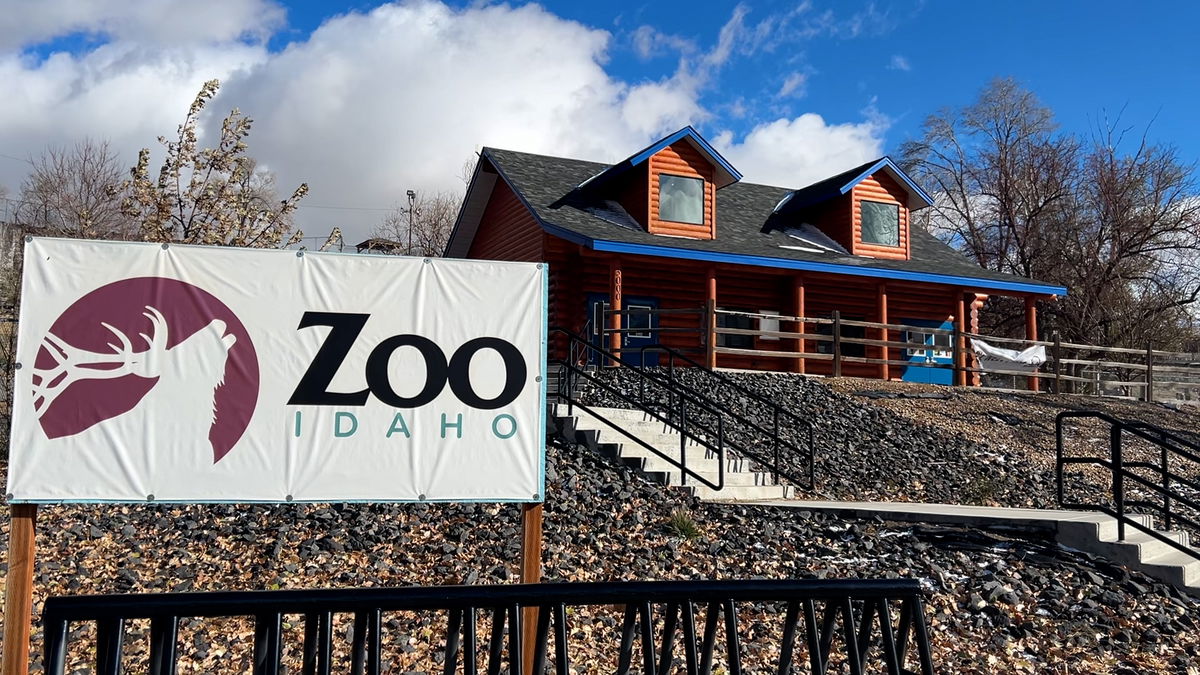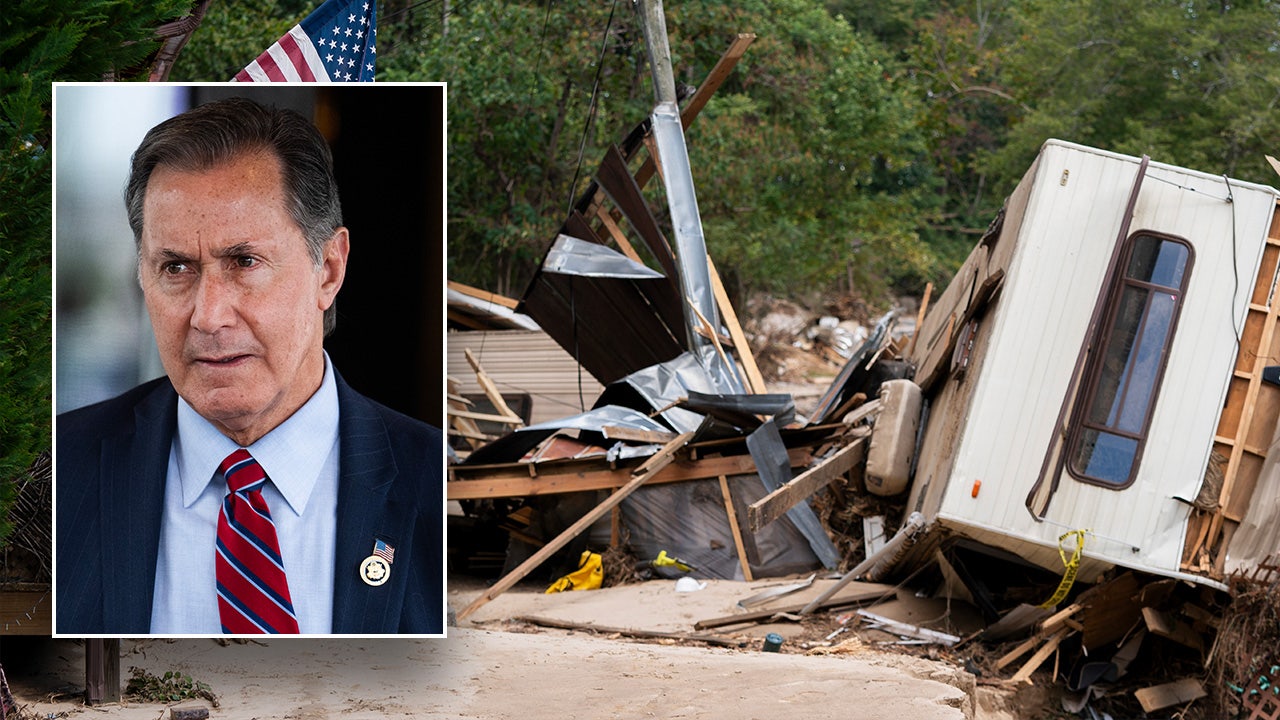Idaho
In Idaho, special education departments face parent complaints, staff shortages and budget gaps – East Idaho News

(Idaho Ed News) — School districts statewide are facing a bevy of challenges as they strive to provide a free and appropriate public education to students with disabilities.
Special education staffing shortages and turnover are perennial issues. An $80 million special education budget deficit means schools have unmet needs. And complaints from parents about districts’ special education programs are on the rise.
RELATED | Special education parents, who say the system is failing their kids, take matters into their own hands
Still, schools must provide an equitable education — and that’s according to federal law. When they fall short of their duties — or when parents allege they have — it can lead to state and federal inquiries and lawsuits, which further drain school resources.
State education leaders have a few solutions in mind to ease staffing and financial hurdles — like an apprenticeship program for special education teachers-to-be, and a proposal to rethink school funding with special education students in mind. They’re also building up resources to help school leaders and parents become better partners.
It’s too early to say how helpful those initiatives will be. For now, schools are left to grapple with the status quo — and recruiting and retaining special education staff is among the most pressing problems.
Special education staffing woes persist at district and state levels
Idaho has faced special education staffing shortages every year since 2002, according to federal data.
Look on any given school district’s job openings page, or on the state’s edjobsidaho, and there will most likely be one or more special education vacancies.
That’s the trend nationally, too. Special education teachers make up 12% of the teaching workforce but amount to 24% of all teacher job postings, according to Georgetown University’s Edunomics Lab research center.
In Idaho, districts are hiring special education teachers with alternative authorizations in order to fill vacancies; they comprise 11% of special education teachers statewide.
To help with staff shortages, the state department has developed a special education teacher apprenticeship program that aims to ease the path to teacher certification for those who already work with students, like paraprofessionals. But so far, only one district has hired a special education apprentice, according to Mike Keckler, the spokesperson for the State Board of Education.
Marguerite Roza, director of the Edunomics Lab, said another way to boost recruitment and retention is with salary increases. In Hawaii, for example, special education teachers are paid an additional $10,000 on top of their base salaries.
But in Idaho, where districts are already strapped for cash, that may not be a feasible solution.
In the meantime, Idaho’s special education staffers tend to have higher student caseloads than their peers in other states. Only Idaho and Ohio have fewer than 20 special education staffers per 200 students — as compared to more than 60 in some states, according to Edunomics Lab research.
Idaho is also facing a high rate of shortages and turnover at the state level. There are 10 special education staff members at the Idaho Department of Education, and nine of them are new within the last five years, according to Scott Graf, the IDE communications director. Four are new in the past two years.
And the IDE’s special education department’s turnover rates have more than doubled in the last two fiscal years.

At the local level, Julian Duffey, the special education director at Jefferson County School district, said positions like his are known for “high burnout” and turnover as well.
On top of staffing shortages and turnover, districts are also navigating budgetary gaps that might increase as more students qualify for special education services.
Special education enrollment and costs are linked. In Idaho, that could soon lead to greater budget shortfalls
Nationally, special education enrollment is trending up, even as overall student enrollment trends down. That means on average, schools are identifying more kids as qualifying for special education, according to Edunomics Lab research.
In some states, more than 20% of students qualify for special education. Idaho and Hawaii are outliers for having the lowest special education enrollment rates in the nation, with just 12% of students qualifying for services.

The varying rates call into question whether disability diagnoses are objective or subjective, which could mean schools are over or under-diagnosing students in need, Roza said in a webinar presentation.
And Idaho falls into the latter category, according to the results of a federal inquiry. For years, Idaho was setting too high of a bar for which students could qualify as having a “specific learning disability,” a category of disorders including dyslexia.
That tracks with national research from the Edunomics Lab, which singled Idaho out for having one of the lowest qualifying rates for specific learning disability in the nation.

The state has now changed its special education manual to address the issue — making a minor but significant tweak that could lead to thousands more Idaho students receiving special education services.
That means special education enrollment will tick up — and so will costs.
Idaho Education News data analyst Randy Schrader contributed to this report.
Originally posted on IdahoEdNews.org on November 19, 2024
=htmlentities(get_the_title())?>%0D%0A%0D%0A=get_permalink()?>%0D%0A%0D%0A=htmlentities(‘For more stories like this one, be sure to visit https://www.eastidahonews.com/ for all of the latest news, community events and more.’)?>&subject=Check%20out%20this%20story%20from%20EastIdahoNews” class=”fa-stack jDialog”>

Idaho
Idaho Wine: The Holiday Party Trick You Never Knew You Needed

A few years ago, during a visit to Idaho and the wine region that was newly taking shape there, three key takeaways took hold in my mind:
- Idaho has abundant sources of natural water to hydrate its vineyards. This means that, generally speaking, vineyards there do not struggle for water nor do they need to be irrigated.
- Idaho’s wine regions are burdened unfortunately by the political designation of “Idaho,” even though its climate and geography share similarities with its border neighbors of Oregon (and the Snake River Valley AVA, or American Viticultural Area) and Washington state (and the Lewis-Clark Valley AVA).
- I should buy real estate in Idaho.
Famous last words, indeed.
Some eight years later, a reassessment of the scene, pre- and post-COVID: Idaho is still blessed with abundant water, though the supply is reasonably stressed by the spike in population during and after COVID. Idaho wine is still burdened by the non-traditional (for wine) designation of “Idaho,” though plenty of positive developmental strides have been taken to position the local industry favorably in consumers’ and the media’s minds.
And I still should have bought real estate in Idaho. (See “population spike” and “abundant water” as rationale, but that’s another story.)
Snake River Valley American Viticultural Area in Canyon County, Idaho
When the opportunity arose recently to taste through a series of wines from Idaho, I agreed enthusiastically. Then, when the shipment of wines arrived, my enthusiasm grew even more. The shipment included a sparkling wine (under a crown cap! from 2019, no less) that highlighted Idaho’s 3100 river miles in the state; a Chardonnay with a label telling exactly the kind of story your imagination wants to hear about Idaho (think Basque immigrant, sheep herders, and a fateful gulch); and a Petit Verdot “Trout Series” (because Idaho) that carried me through the food prep for the dinner I’d serve for friends who’d come to taste through the wines with us.
The scene was set, and bolstered in Idaho’s favor even further by the guest who’d grown up in Idaho as a boy and was ready and more than willing to give Idaho wine the benefit of the doubt. (See “unfortunate political designation,” above.) Let me cut to the chase, though, with three new takeaways that took hold in my mind that night:
- The wines we tried did Idaho proud.
- These wines would stand on their own, whether they’re labeled “Idaho” or not, and whether or not that prejudices consumers. I’d encourage consumers to take (and taste) them at face value, so to speak. This Chardonnay right here in my glass. That Tempranillo in its own right. This other Petit Verdot that is simply delicious, not to mention versatile. They measure up. Period.
- I would still buy real estate in Idaho. More to the point, I would buy real estate in Idaho that would turn into vineyards.
The truth is that I have no idea how easy it will be for readers of this column to find or buy or taste wines from Idaho. Believe me, I wish it were EASIER than whatever your answer is to that likelihood. Which means that readers are now officially assigned the task of ASKING for wines from Idaho from their favorite local bottle shop. You will most likely be looked at strangely — get ready for it — but I strongly encourage you to hold your ground. These wines are good. They are reasonably priced. They are unusual. They will start a conversation. You can put them in brown paper bags for a holiday party and pour them blind in comparison to a more common expression of any of these grapes, and the Idaho wines will win. And then you get to be victorious, and you’ll be known as the person who brought the most interesting wine to the table.
Who wouldn’t want to come to THAT holiday party this season?
Count me in. Especially if you’re pouring any of these favorites, all from the Snake River Valley AVA of Idaho.
2019 3100 Cellars “Whitewater” Sparkling Wine
2023 Dude DeWalt Cellars Chardonnay
2021 Hat Ranch Winery Tempranillo
2020 Trout Series Petit Verdot by Sawtooth Winery
Idaho
How Zoo Idaho prepares for the winter – Local News 8

POCATELLO, Idaho (KIFI)– Unlike other zoos, Zoo Idaho’s native species need little preparation for the harsh cold of Idaho’s winters.
Zoo staff prepare most animals to spend the season outdoors–they will put a de-icing agent in the animals’ water supplies and straw bedding on concrete flooring in buildings.
“For the most part, they’re made for this type of weather,” said Peter Pruitt, superintendent of Zoo Idaho. “We’re not dealing with exotic animals from other locales.”
Some migratory birds will be kept indoors during the coldest days, but animals like bears, bison, and elk will brave the elements outside.
Zoo Idaho is closed for the season, but they will be holding some winter holiday events. To learn more you can visit Zoo Idaho’s website.
KIFI Local News 8 is committed to providing a forum for civil and constructive conversation.
Please keep your comments respectful and relevant. You can review our Community Guidelines by clicking here
If you would like to share a story idea, please submit it here.
Idaho
Bryan Kohberger’s request in Idaho murder case sparks criticism from judge

The judge presiding over Bryan Kohberger’s murder trial chastised the defense on Friday for asking the court to push back a deadline in the case.
Kohberger, 29, is charged with four counts of first-degree murder and one count of felony burglary. He is accused of fatally stabbing University of Idaho students Madison Mogen, Kaylee Goncalves, Xana Kernodle and Ethan Chapin in an off-campus residence in 2022.
Anne Taylor, Kohberger’s attorney, asked District Judge Steven Hippler to extend the deadline for filing motions related to discovery. The deadline was Thursday, and the defense filed a “Motion for Leave” on Wednesday.
August Frank/Lewiston Tribune via AP
“Defendant asserts his counsel and investigators are still reviewing ‘the vast amount of discovery in this case’ and, therefore, he needs additional time to file motions related to discovery. Motions to enlarge deadline filed on the eve of the deadline are not well taken,” Hippler wrote in an order on Friday.
Hippler denied the motion. He also pointed out that the prosecution’s discovery deadline was September 6.
“Defendant could have ascertained far sooner whether the discovery motions deadline would pose difficulty and brought it to the Court’s attention,” Hippler said. “Further, and importantly, Defendant has not demonstrated with his filing good cause to enlarge the deadline. He has not set forth what efforts have been made to review the discovery, what portion of discovery has not yet been reviewed, why it has not been reviewed or how long it will take to complete such review.”
The defense asked for a hearing on the motion so they could present oral arguments, evidence and testimony to support their request.
Hippler has yet to make a ruling on a series of motions the defense has filed objecting to the state’s intent to seek the death penalty.
The prosecution and defense presented arguments on the matter to Hippler on November 7. After listening to both sides, Hippler said he would take the matter under advisement and issue a ruling at a later date.
In the state of Idaho, defendants convicted of first-degree murder are eligible for the death penalty if the crime meets any of 11 aggravating factors.
Prosecutors have identified four aggravating factors in Kohberger’s case, which are “at the time the murder was committed, the defendant also committed another murder;” “the murder was especially heinous, atrocious or cruel, manifesting exceptional depravity;” “by the murder, or circumstances surrounding its commission, the defendant exhibited utter disregard for human life;” and “the defendant, by his conduct, whether such conduct was before, during or after the commission of the murder at hand, has exhibited a propensity to commit murder which will probably constitute a continuing threat to society.”
The trial is scheduled to start on August 11, 2025, with jury selection beginning on July 31.
Do you have a story Newsweek should be covering? Do you have any questions about this story? Contact LiveNews@newsweek.com
-

 News1 week ago
News1 week agoHerbert Smith Freehills to merge with US-based law firm Kramer Levin
-
/cdn.vox-cdn.com/uploads/chorus_asset/file/25724877/Super_Nintendo_World.png)
/cdn.vox-cdn.com/uploads/chorus_asset/file/25724877/Super_Nintendo_World.png) Technology1 week ago
Technology1 week agoThe next Nintendo Direct is all about Super Nintendo World’s Donkey Kong Country
-
Business6 days ago
Column: OpenAI just scored a huge victory in a copyright case … or did it?
-

 Health6 days ago
Health6 days agoBird flu leaves teen in critical condition after country's first reported case
-

 Business3 days ago
Business3 days agoColumn: Molly White's message for journalists going freelance — be ready for the pitfalls
-
Politics1 week ago
Editorial: Abortion was on ballots across the country in this election. The results are encouraging
-
World7 days ago
Sarah Palin, NY Times Have Explored Settlement, as Judge Sets Defamation Retrial
-

 Politics2 days ago
Politics2 days agoTrump taps FCC member Brendan Carr to lead agency: 'Warrior for Free Speech'

















